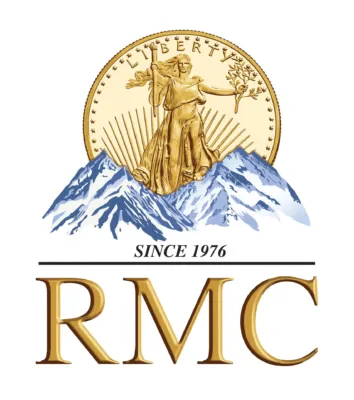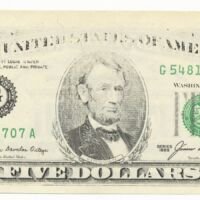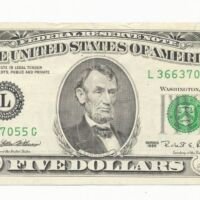We buy and sell Mint Errors and our inventory can change daily. Therefore, what is here today, may be gone tomorrow.
Sold inventory is shown for reference purposes.
Please call us or visit our showroom for latest availability and price.
United States Coin Errors
Authentic error coins should not be confused with coins that are damaged after being minted, which is known as post-mint damage.
Once a coin is released into circulation, they are prone to damage. A damaged coin is NOT an error coin. Examples of damage include corrosion, altered surfaces, bent, scratched, gouged, etc. Also, even if your coin is an actual error coin, not all error coins have value, are collectible or are even desirable.
Mint-made errors are errors in a coin made by the mint during the minting process. Groups of coins with distinctive characteristics are known as varieties. The term variety applies to coins with both intended and unintended differences while the term error refers only to coins with unintended differences. Nevertheless, not all errors are varieties. Although there may be many identical examples of a some errors, others are unique.
For example, there may be many indistinguishable examples of coins with a specific die crack, while off-center strikes tend to be unique. Being unique does not mean that an error is valuable. Although no other coin may be similar to a coin with an off-center strike, off-center strikes happen often enough that buyers can choose from many examples each of which varies slightly from the other.
Mint error coins can be the result of deterioration of the minting equipment, accidents or malfunctions during the minting process, or intentional interventions by mint personnel. Accidental error coins are perhaps the most numerous and in modern minting are usually very rare, making them valuable to numismatists. Intentional intervention by mint personnel does not necessarily include a deliberate attempt to create an error, but usually involves an action intended to improve quality that miscarries and creates error coins instead.
Errors can be the result of defective planchets, defective dies or the result of mistakes made during striking. The planchet, die, and striking (or PDS) classification system happens to correspond with the mint-marks of the three largest U.S. mints, Philadelphia, Denver, and San Francisco.
Not all errors fall neatly within the categories. Sometimes design elements are missing from coins because die crevices are filled with grease. Labels used to identify specific categories of errors sometimes describe the cause of the error (die crack, rotated die, clipped planchet). Other errors names describe what the viewer sees when looking at the coin (wavy steps, trails, missing element) while others have names that were adapted for use (mule, cud, brockage).
The result is that some errors are known by multiple names. Filled die errors are also known as missing design element errors and as strike throughs. As is noted below under the discussion of missing design element coins, some errors have multiple causes. A rare error that sold for $5462.50 on Heritage Auctions in August 2010 is an undated U.S nickel struck on top of a 1960 5 centavos. Foreign coins struck on a U.S coin planchet or vice versa are very uncommon and hold a high value.
Authentic error coins should not be confused with coins that are damaged after being minted, which is known as post-mint damage.
Classification of Error Coins
There are three different classifications of error coins. Some error coins may have a combination of these problems.
Planchet: Any problem with the planchet that the coin was made on. This may include incomplete planchets, wrong metal, cracked, chipped, clipped, or thickness.
Die: A coin die is a hardened piece of metal that is used to strike the coins in the coining press. Any coin die that is not made in adherence to United States Mint standards. This may include preproduction errors and damage to the coin die during the coining process.
Strike: Any problem with the physical production of the coin in the coining press. There is numerous classification of errors that are due to the improper striking of a coin. Examples include off-center strikes, multiple strikes, rotated dies, misaligned dies, weak strikes, overstrikes, etc.
Types of Mint Errors
Die Cap
Occurs when a planchet is fed into the coining press, the previous planchet did not eject and the first planchet sticks to one of the coin dies. After repeated strikes, the first planchet starts taking the form of a bottle cap.
Wrong Planchet
The incorrect planchet is fed into the coining press and does not match the dies that are loaded in the press.
Off-Centers
The planchet is not centered between the two coin dies in the coining press.
Broadstrikes
The coining collar that holds the coin between the two dyes is not fully engaged in the coin is struck anyway.
Partial Collars
The coining collar is partially engaged in results in a malformed coin edge.
Brockages
One coin is struck on top of another coin in the coining chamber.
Double & Triple Struck
The coin is struck multiple times.
Die Adjustment
The coin is struck with not enough pressure due to the coin press operator adjusting the machine.
Bonded Coins
Two coins are struck together.
Double Denominations
A coin is first struck with one denomination and then fed through a coining press that has coin dies for a different denomination.
Coins Struck on Feeder Finger Tips
The coin press uses “feeder fingers” to feed the planchets into the coining press. Occasionally, the feeder finger gets struck with the coin design instead of the planchet.
Struck Fragments
Metal fragments from various sources can end up in the coining press and get struck with the coin design.
Proof Errors
Any proof coin that was not properly prepared according to proof coin standards.
Transitional Errors
When the mint changes from one metallic composition to another and a previous planchet with the old composition ends up getting struck as newly dated coins.
Fold-Over Strikes
A planchet is fed into the coining press in the vertical position and get struck on its edge instead of on its surface.
Missing Edge Lettering
Coins that are supposed to have lettering on the edge is missing. This is most prevalent on Presidential Dollars.
United States Currency Errors
Double Denomination
A double denomination note has differing face and back values, for example a $5 face with a $10 back. Double denomination errors are exceedingly rare and valuable. The number in existence is very low. If you find one on eBay or for sale from a source otherwise not confirmed to be knowledgeable, it is likely that the note is not genuine.
Faulty Alignment (aka Miscut)
Faulty alignment errors are characterized by once side of a note being properly centered, while the other is shifted to some degree. Shifting may be only minor or may be dramatic. These errors are relatively common and widely collected.
Insufficient Inking
Insufficient inking errors result from poorly or inadequately filled printing plates. As a result, the note displays an image that is faint or not fully complete. Like other currency errors, insufficient inking may be only minor, or may affect large parts of the note. Most errors of this type have insufficient inking of the 1st or 2nd printing.
Inverted Back
Inverted back errors might also be called notes with upside-down backs. This type of error is caused by a sheet being fed incorrectly (rotated 180 degrees) into the printing press for printing of the face (backs are printed first). Inverted back errors are not very common and command relatively high premiums.
Blank Back or Blank Reverse
A blank back error note is one that has printing on one side, but no printing on the other. These errors are often caused by two sheets being fed into a printing press at the same time.
Double or Multiple Impressions
Multiple impression errors usually display an image that appears “blurry” or “fuzzy”, and may occur when a sheet is mistakenly re-fed through the press after receiving printing, or a sheet staying in place after being printed and receiving a second impression of the same design.
Obstructed Printings
Obstructed printing errors occur when a piece of material (usually a stray piece of paper, tape, wrapping, etc) comes between the printing plate and the uncut sheet. The result is a portion of a note with blank area. Obstructed printings are popular with error collectors, with value increasing dramatically when the item causing the obstruction is retained with the error note.
Offset Printing or Offset Transfer
Offset printed notes occur when an inked plate makes contact with the bed, often the cause of no sheet being fed to the press to accept the intended ink. As a result, when the next sheet passes through the press, the area impressed onto the impression cylinder is then pressed onto the opposite side of the note. Like others, this type of error can range from minor to a complete offset, with the latter being more desirable to collectors. While a rational theory, note that the errors described or pictured here are not caused by wet sheet transfer, or ink transferring from still-wet sheets to other sheets.
Reverse Overprints (3rd Print on back)
Back overprint errors are the result of an uncut sheet being fed into a press with the obverse of the note facing the overprinting press. The information printed by the overprinting press include Treasury and Federal Reserve District seals, district numbers and serial numbers. Such a note will be missing these elements from the front, and instead have each displayed on the back.
Inverted Overprint (3rd Print)
When a sheet is fed upside down relative to the existing face print, the result is the Treasury Seal, District Seal, District Number and serial numbers being printed upside down. Inverted 3rd print errors are not especially rare.
Misaligned Overprints (Shifted 3rd Print)
When overprints (3rd printing) occur when the serial numbers and seals are out of position, vertically or horizontally, and are so far from their appropriate position that they cover unintended portions of the note. For example, a District seal might be so far misaligned that it covers the portrait on the face of the note. Again, errors range from minor, to major, with major errors being more desirable to collectors.
Missing Overprint (3rd Print)
A note with a missing overprint is easily recognizable because the bill lacks serial numbers and seals.
Missing 2nd Printing
Similar to Missing Overprints, a note with a missing 2nd print is recognizable because the note is missing its face printing. Therefore no subject or denomination is displayed on the note.
Mismatched Serial Numbers
On regular notes, both serial numbers on the front of the note are the same. Mismatched serial errors are characterized by numbers (or alpha characters) not matching on the same note. There are several different causes for this type of error. Notes with more than one digit mismatched are more valuable than those with a single mismatched number. Additionally, notes with mismatched characters are more scarce than notes with mismatched numbers.
Stuck Digits
When the serial number digits freeze in place or get otherwise stuck during the printing process, the result is a stuck digit or partially turned digit.
Cutting Errors
After printing is complete, the uncut sheets of notes are sent to be cut into single notes. Like the previous printing process many errors can occur during the process of printing, ranging from minor to quite dramatic.
Gutter Fold or Blank Crease
Gutter folds are the result of the uncut sheets being sent through the press with a wrinkle or wrinkles in the paper. A gutter fold error note may have one wrinkle or multiple wrinkles. While collectible, these errors are relatively common.
Printed Fold
A printed fold occurs when an uncut sheet folds over and remains this way during the printing process. As such, these type of errors range widely depending on the size and nature of the fold.
Ink Smears
As the name implies, an ink smear error occurs when smears of ink are passed from the press onto a note. Ink smears are not hard to duplicate or fake, so be wary when purchasing.












